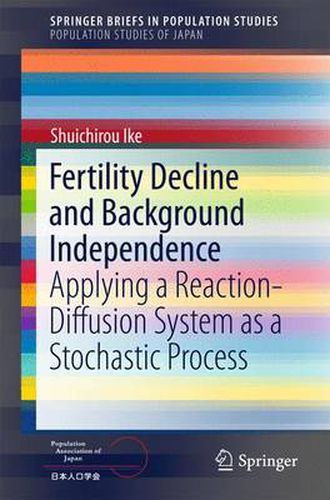Readings Newsletter
Become a Readings Member to make your shopping experience even easier.
Sign in or sign up for free!
You’re not far away from qualifying for FREE standard shipping within Australia
You’ve qualified for FREE standard shipping within Australia
The cart is loading…






In this book the author maintains that fertility declines independently of its background . Normally, fertility decline is thought to occur as a result of alteration in the socioeconomic background such as the decline of the infant mortality rate, urbanization, the level of literacy, and so on. This point of view has been regarded as equivalent to demographic transition . However, the concept of demographic transition is so superficial, naive and unscientific that it should be applied merely to the ostensible demographic phenomena, not to the mechanisms of fertility decline. The author regards this way of thinking, i.e., that the occurrence of fertility decline is dependent on socioeconomic background, as the background dependence of fertility decline. On the contrary, there is considerable counterevidence to the background dependence of fertility decline. The argument is made that background dependence lacks positive evidence and predictability and consequently, is falsifiable. That decisive counterevidence is introduced in this book. The author revives the diffusion hypothesis of fertility decline at the point of the number of children per couple as the reaction-diffusion process in a mathematical equation. Fertility decline in Europe in the eighteenth and nineteenth centuries occurred as a reaction-diffusion process independent of socioeconomic background. In Japan as well, fertility (the number of children per couple) declined independently of background. This book provides ample evidences persuasively demonstrating this independence of fertility in Japan. The occurrence of marriage is also independent of socioeconomic background. Thus the author formalizes the marriage function as an integral equation of marriage probability, as a result, it demonstrates a better fit with the observed data than does any other marriage function. Occurrence of marriage is almost solely dependent on the density of marriages that occur in a given subspace.
$9.00 standard shipping within Australia
FREE standard shipping within Australia for orders over $100.00
Express & International shipping calculated at checkout
In this book the author maintains that fertility declines independently of its background . Normally, fertility decline is thought to occur as a result of alteration in the socioeconomic background such as the decline of the infant mortality rate, urbanization, the level of literacy, and so on. This point of view has been regarded as equivalent to demographic transition . However, the concept of demographic transition is so superficial, naive and unscientific that it should be applied merely to the ostensible demographic phenomena, not to the mechanisms of fertility decline. The author regards this way of thinking, i.e., that the occurrence of fertility decline is dependent on socioeconomic background, as the background dependence of fertility decline. On the contrary, there is considerable counterevidence to the background dependence of fertility decline. The argument is made that background dependence lacks positive evidence and predictability and consequently, is falsifiable. That decisive counterevidence is introduced in this book. The author revives the diffusion hypothesis of fertility decline at the point of the number of children per couple as the reaction-diffusion process in a mathematical equation. Fertility decline in Europe in the eighteenth and nineteenth centuries occurred as a reaction-diffusion process independent of socioeconomic background. In Japan as well, fertility (the number of children per couple) declined independently of background. This book provides ample evidences persuasively demonstrating this independence of fertility in Japan. The occurrence of marriage is also independent of socioeconomic background. Thus the author formalizes the marriage function as an integral equation of marriage probability, as a result, it demonstrates a better fit with the observed data than does any other marriage function. Occurrence of marriage is almost solely dependent on the density of marriages that occur in a given subspace.